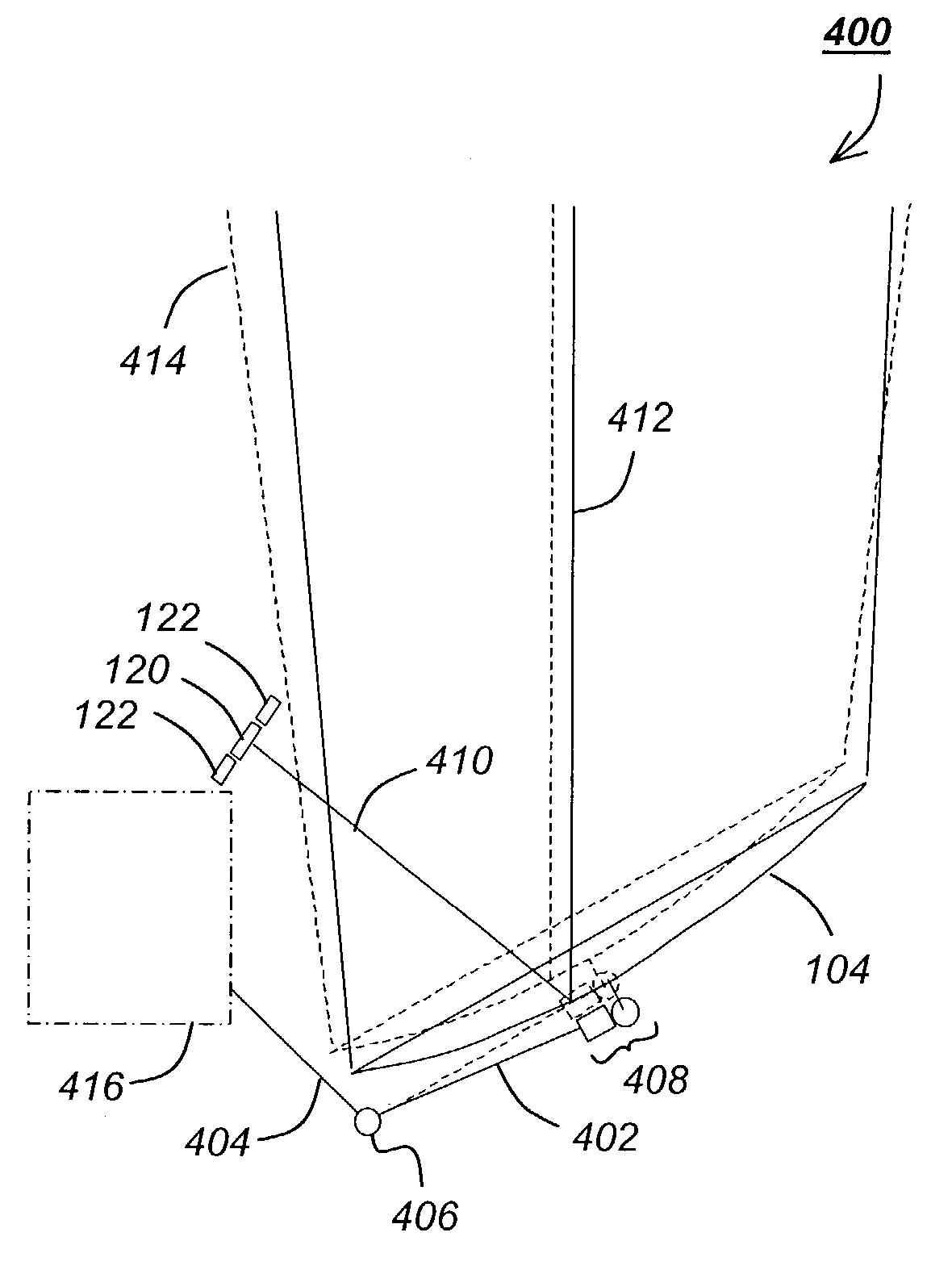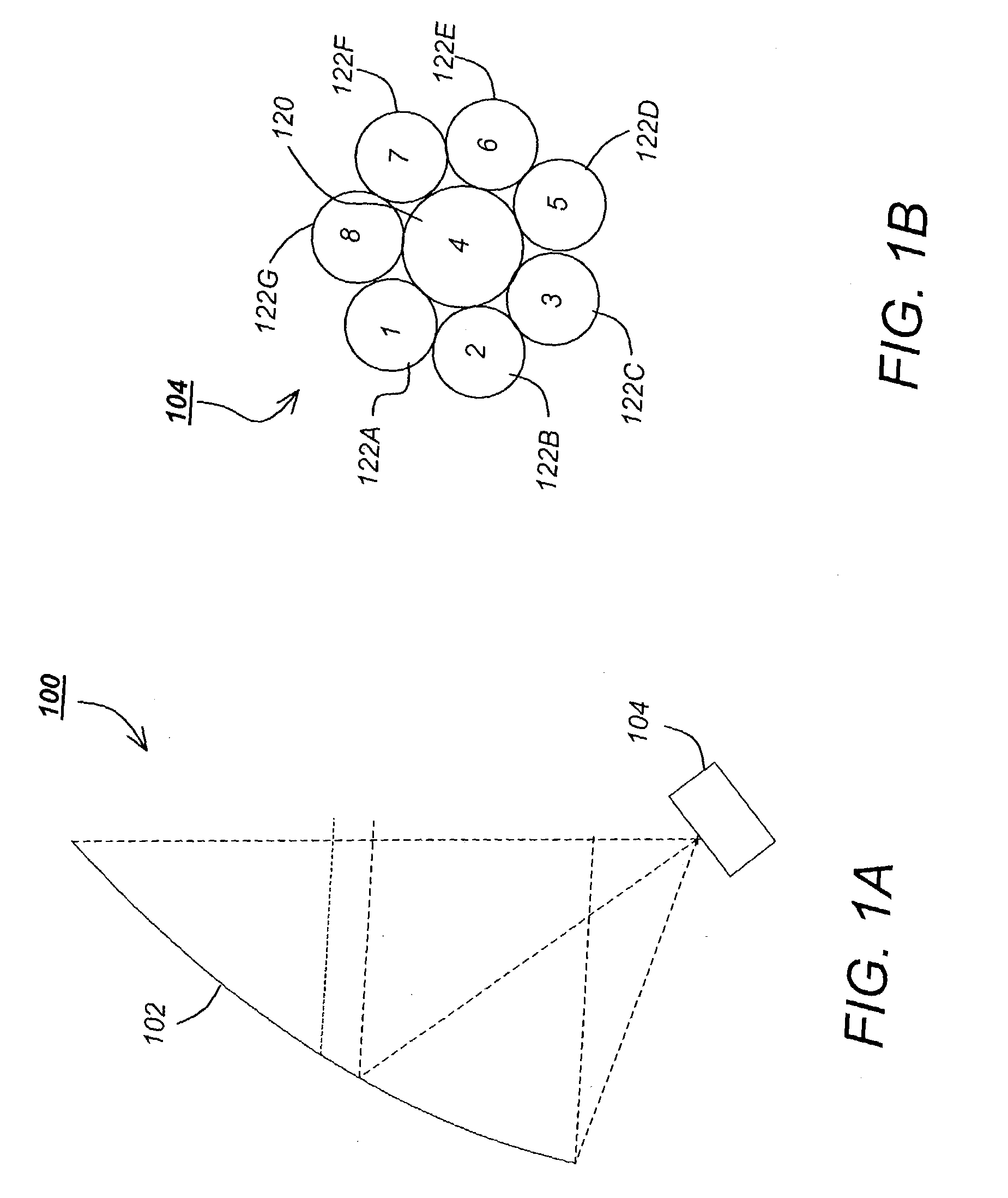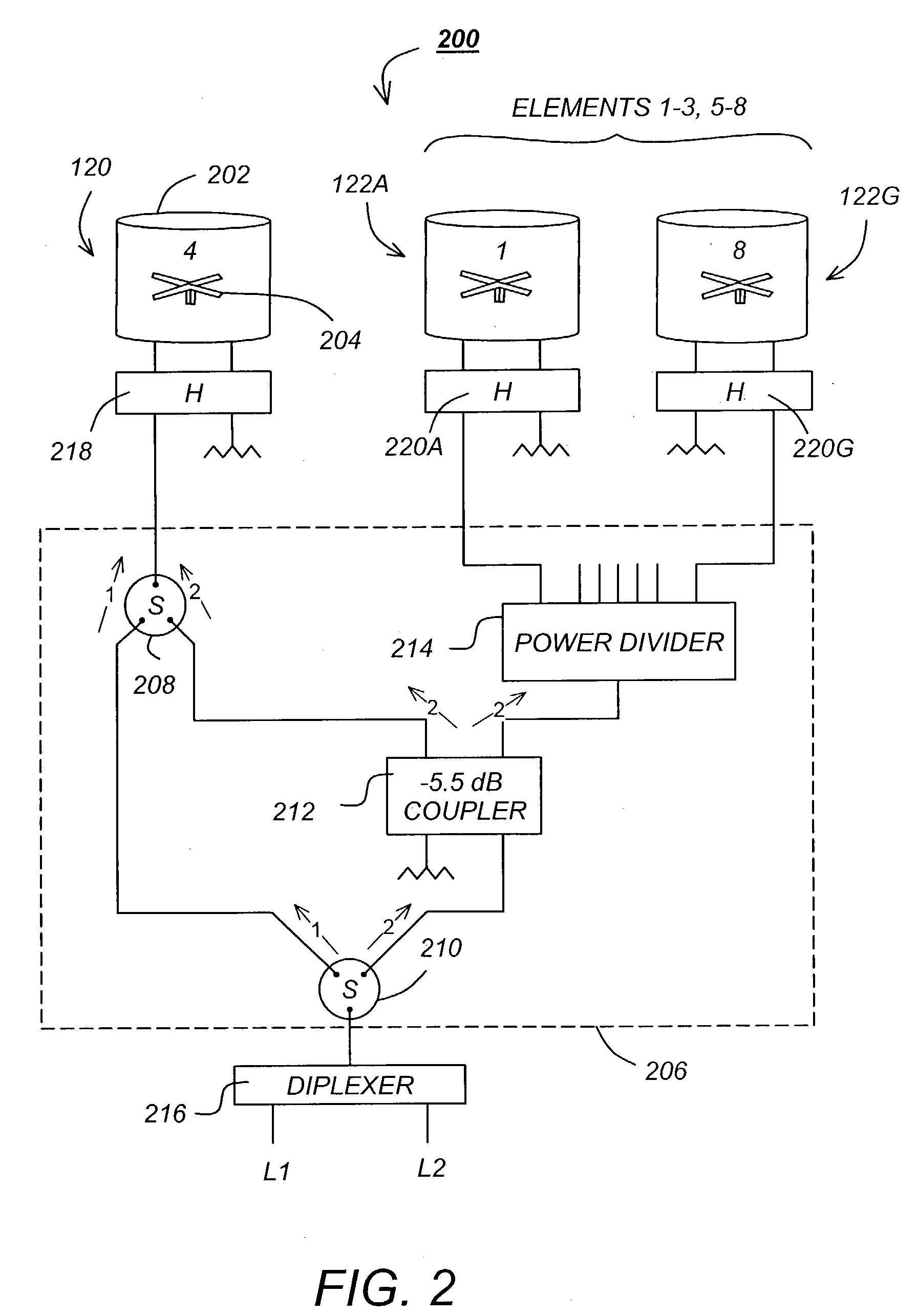Beam reconfiguration method and apparatus for satellite antennas
a satellite antenna and beam technology, applied in the direction of antenna details, antenna adaptation in movable bodies, antennas, etc., can solve the problems of inability to adapt to changing service requirements, inherently high sidelobes, and inability to provide any flexibility in coverage patterns. , to achieve the effect of increasing complexity and cost, and increasing flexibility
- Summary
- Abstract
- Description
- Claims
- Application Information
AI Technical Summary
Benefits of technology
Problems solved by technology
Method used
Image
Examples
Embodiment Construction
[0035] FIG. 1A is a diagram of one embodiment of the reconfigurable antenna system 100. It uses a large deployable offset reflector 102 being fed with an 8 element feed array 104. The reflector has a 252 inch diameter projected aperture, a focal length of 160 inches, and an offset clearance of 50 inches in order to avoid the feed array 104 blockage. In the illustrated embodiment, the reflector 102 shape is parabolic but can be other shapes as well, to suit the particular application.
[0036] FIG. 1B is a diagram depicting one embodiment of the feed array 104. The feed array 104 includes a primary element 120 and a plurality of secondary elements 122A-122G disposed about the periphery of and surrounding the primary element 120. In one embodiment, the primary element 120 includes a first cup-dipole and the secondary elements include seven or more second cup-dipoles smaller in diameter than the first cup dipole (e.g. 13.0 and 10.0 inches in diameter, respectively).
[0037] FIG. 2 is a sche...
PUM
 Login to View More
Login to View More Abstract
Description
Claims
Application Information
 Login to View More
Login to View More - R&D
- Intellectual Property
- Life Sciences
- Materials
- Tech Scout
- Unparalleled Data Quality
- Higher Quality Content
- 60% Fewer Hallucinations
Browse by: Latest US Patents, China's latest patents, Technical Efficacy Thesaurus, Application Domain, Technology Topic, Popular Technical Reports.
© 2025 PatSnap. All rights reserved.Legal|Privacy policy|Modern Slavery Act Transparency Statement|Sitemap|About US| Contact US: help@patsnap.com



